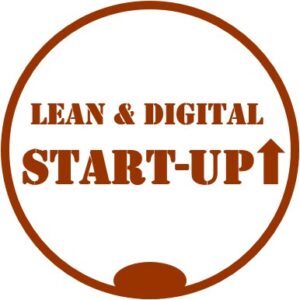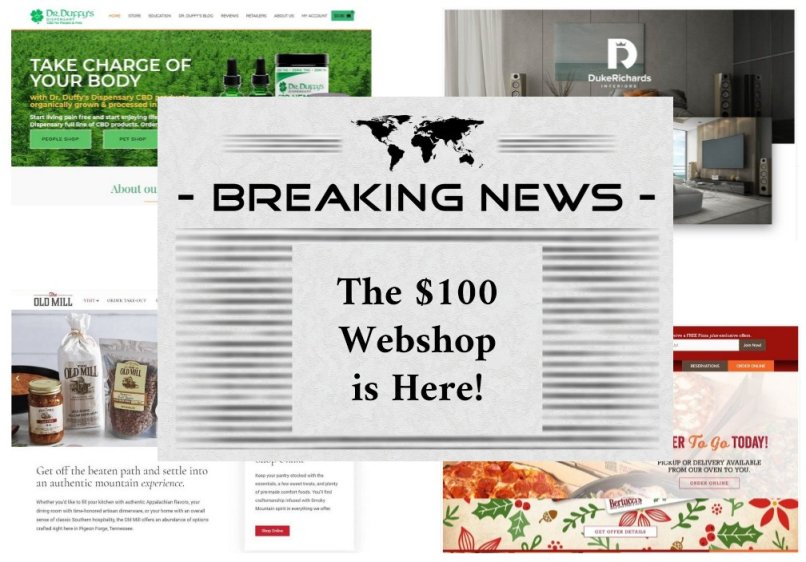
If you want to set-up an online store (webshop) you can choose from a number of excellent solutions such as BigCommerce, Magento, Shopify, Wix, and WooCommerce. If you are prepared to pay a monthly fee, and want to set-up your store quickly, BigCommerce, Shopify and Wix are all good solutions, as far as I know. If you want almost unlimited control, and have the budget for developers, go for Magento.
But if you are willing to learn (or have someone on your team who has some practice in web design) and want it for free, then WooCommerce is the best solution.
That’s what I am going to explain in more details. The LeanStartupTools site was also produced with WooCommerce and WordPress. Actually, WordPress is an “open source software you can use to create a beautiful website, blog, or app”. WooCommerce is actually a plugin to build a full featured online store inside a fast WordPress site. To avoid confusion, we are talking about WordPress.org as the platform, not WordPress.com, which is more suitable for blogging.

If you want to use WordPress, you need to purchase a domain and a web hosting service first. After that you can develop your web shop with all the supporting web site elements, such as a blog, forum and whatever you want. There are more than 50k free plugins available! You can build the website and the store in one integrated, on-line development environment.
On top of webhosting, the only thing I recommend to pay for at the beginning is a professional theme. The one we use costed us $49 (all four beautiful designs in the picture above use that particular theme).
If you need special features and don’t have the time to experiment countless hours with dozens of free plugins, you may want to spend some more for pro plugin versions, which are often more feature rich and better supported, than the free ones.
Some plugin categories (all free) I use on our websites with an online store (beside WooCommerce):
- contact form
- forum
- GDPR compatible cookie consent
- invoicing (integrating the shop with the invoicing system)
- PayPal credit card acceptance
- EU VAT assistant
- newsletter handling (bulk emails)
- cache management (to improve speed)
- security (anti-virus, firewall and malware scan)
- staging (to experiment with new features without the risk of breaking the live site)
- SEO
- pixel integration (for Google Analytics, Google and Facebook Ads, etc.)
However, you have to be prepared to invest a lot of time to set-up everything properly. If you want a quicker (but perhaps less flexible) solution, go for the hosted online stores, instead of the version I explained before. Be prepared to pay for a premium plan, if you need advanced features.
You can use your eCommerce solution to sell physical goods, downloadable (digital) products, offer software as a service (SaaS) or other services.
If you would like to read an extended version of the above, write your suggestions on the Contact Us page and in a later version I will include the most popular features requested.
In summary:
To set-up an online store is either both very quick and easy or a little more difficult, but you have more flexibility and no monthly fees have to be paid.
These were the good news.
The bad news is that the world of eCommerce is extremely competitive. There are dozens (if not hundreds) of blogs and websites stating that running a profitable online store is easy, but that is simply not true. With behemoths like Amazon ruling the stage, our only chance is to go niche. However, experts say, there are no perfect niches any more. But there is always room for bests.
Let’s put together the elements of success in eCommerce.
First Element: The product(s) or services. Does it solve a real problem or satisfy real customer needs? Do you add value?
Second Element: The online store (that’s we were talking about so far) together with other element of online presence, such as a supporting website with reach content and a Facebook page.
Third Element: Bringing traffic to the webshop. For quite a long time, you cannot expect organic traffic to bring in enough customers to a new site (that doesn’t mean you should neglect SEO). So be prepared to spend for paid traffic (such as Facebook or Google Ads, but there are a number of other sales and marketing channels, too). This arena, where you have to survive is itself like the ancient Colosseum with gladiators and lions.
Fourth Element: Data analytics. If you don’t want to drive blind, you need to collect and analyse webstore, Google Analytics, Facebook and Google Ads, etc. data continuously. Then make informed decisions accordingly.
The Fifth Element: Secret
Just kidding. I firmly believe that the 5th element is our ONLY chance to demand a long term stand in the eCommerce eco-system. The first four ingredients are almost trivialities. Without doing those well, you have no chance to finish running the marathon. Without the 5th you have little or no chance to be among the winners. Unless you are very lucky, like I was when I had the chance to sell an outstanding product, the Enquist shoes.
According to international statistics only every fifth startups survive five years in business. Online store statistics are not widely available, but the survivor rate is probably similar. However, insiders say that most of the webshops hardly provide a fair salary for the owners.
So, what constitutes The Fifth Element?
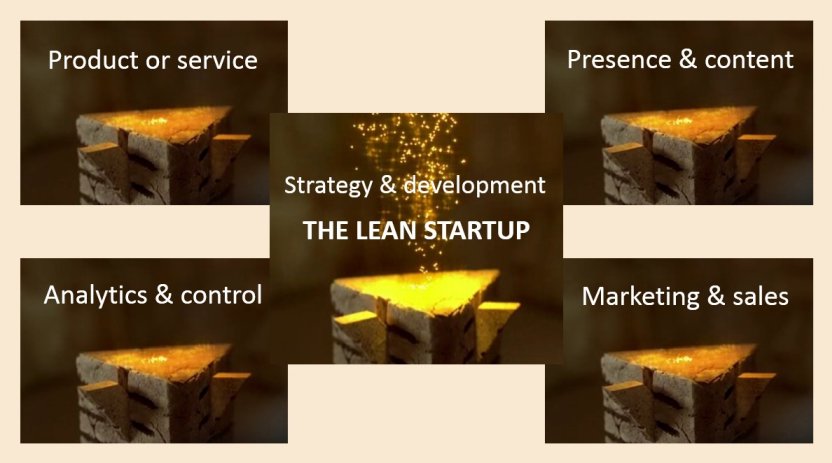
First of all, you need a solid strategy, which is in harmony with the product range and the market chosen. But that is not enough, you need a good business model reflecting the product and market strategy. An excellent tool is the business model canvas. I prefer the Lean Canvas, as this version suits best for emerging businesses. The one on the picture is our slightly modified version of the pioneering works of Alexander Osterwalder and Ash Maurya.
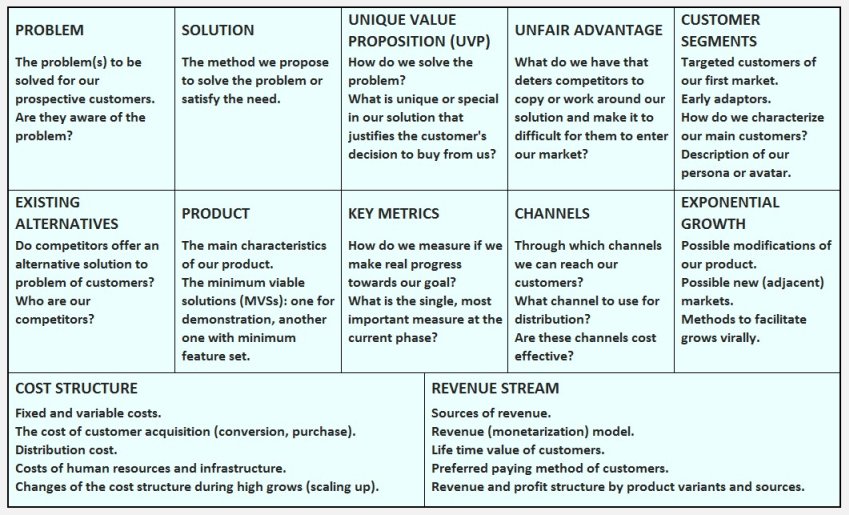
Furthermore, you need to know the whole process of building your business from idea to (preferably) exponential growth. We have a 24 step process for this (see my eBook).
Many eCommerce businesses are destined to fail right from the beginning.
“Know the enemy and know yourself; in a hundred battles you will never be in peril. When you are ignorant of the enemy, but know yourself, your chances of winning or losing are equal. If ignorant both of your enemy and yourself, you are certain in every battle to be in peril.” / Sun Tzu, The Art of War /
Your idea for what and how to sell must be compatible with your life goals, your strength, for example deep domain (industry and product) knowledge is a definite advantage, if not a must. If your store is just one of the one hundred webshops selling waterproof backpacks, how will it stand out? It will not even be on the first three pages in Google search.
Next, you need to know your market very well. It is not enough to know yourself, you have to know your enemies, as well (the competitors, the existing product alternatives). So plenty of market research has to be done in an organized way.
The lean canvas is a perfect alternative to writing a business plan (the latter is not really suitable and relevant for a startup). Having said that, you need solid estimates for the expected expenses and sales.
Don’t forget to state your Unique Value Proposition.
Here, at Lean Startup Tools we are developing a bunch of tools to support those wishing to start or reboot a startup. On top of that I have written a 75 page eBook titled In Search of the Lean Startup, which explains the lean startup methodology. This is an integrated and simplified version of what was developed by prominent authors. Integration and simplification was necessary, because the best books on the subject were written with Silicon Valley startups (you know the ones which are supported by multi million dollar venture capital right from the beginning) on the mind of the authors. We are committed to the Lean Startup movement, so you can download the eBook for FREE.
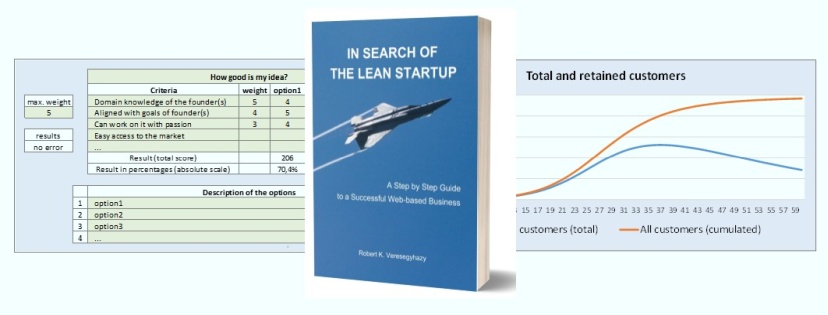
According to the classic lean startup methodology, products and customers are developed in parallel. That largely reduces the risk of failure – to develop something the customers don’t want. A special terminology is used for that intermediary product (which is under development, but can be shown, sometimes even sold to the customers): the Minimum Viable Product.
If you want to sell a physical product you buy at wholesale price that concept is not literally applicable. However, you can do something analogous. Before you invest a lot of money in stocks you may NEVER sell, try to introduce the product to the market gradually and in small quantities. First you have to make sure, that there is a demand for the product (or you can raise demand). Commit yourself to invest in stocks only after you have proven, that you can actually sell the product for the chosen market (in lean startup terminology we call that phase the product-market fit).
Finally, capital requirements are also reduced. You have the chance to finance growth from the results of sales (that is called bootstrapping).
The whole process is integrated of course. You -:
- Select a product or service idea
- Establish online presence
- Gradually introduce your product or service to the market (either in a rudimentary form or in small quantities)
- Measure and analyse the results
- Design new experiments, for example run A/B advertising tests
- Decide to persevere, make small improvement, make substantial changes (pivots) or abandon your idea and
- Select a new product or service idea, etc.
Did you like this post and want to stay in touch to read more in the future? Then press a Like on the Facebook page insert at the bottom or in the sidebar. That will also encourage us to develop more useful content for you. 🙂
